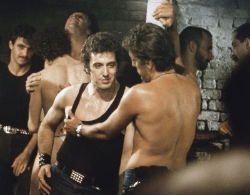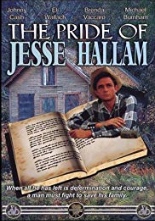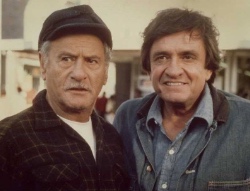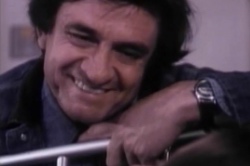
 Only in the 1970s — or at least the New World Pictures version of the 1970s — could you make absolute heroes out of a pair of cop-shooting, hostage-banging, dynamite-toting bank robbers the way that the drive-in favorite The Great Texas Dynamite Chase did, starring the breast-baring duo of Claudia Jennings and Jocelyn Jones.
Only in the 1970s — or at least the New World Pictures version of the 1970s — could you make absolute heroes out of a pair of cop-shooting, hostage-banging, dynamite-toting bank robbers the way that the drive-in favorite The Great Texas Dynamite Chase did, starring the breast-baring duo of Claudia Jennings and Jocelyn Jones.
Doing a good job of capturing small town Texas — or at least the California stand-in of it — complete with tumbleweeds blowing down the railroad tracks, bored Texan Ellie Jo (Jones, Tourist Trap) works in a bank that has a Confederate flag on the wall; when prison escapee Candy (Jennings, Sisters of Death) comes in, sticks of lit dynamite in hand, the two team up and head out on the road looking for money and men, not in that order.
 And it’s a pretty good plan, too, taking them all across Texas’ various backroads, saloons and hotels. Eventually, they hook up with small-time thief Slim (Johnny Crawford); if you’ve ever wanted to see the co-star of The Rifleman making drunken love while a song called “Love Is Good to Me” plays over the quadraphonic stereo — and I know that fetish is out there — here’s your flick.
And it’s a pretty good plan, too, taking them all across Texas’ various backroads, saloons and hotels. Eventually, they hook up with small-time thief Slim (Johnny Crawford); if you’ve ever wanted to see the co-star of The Rifleman making drunken love while a song called “Love Is Good to Me” plays over the quadraphonic stereo — and I know that fetish is out there — here’s your flick.
In a particularly downbeat ending, even though the gals make it to Mexico on horseback, just about everyone else receives massive shotgun blasts to the chest; to be honest, I was kind of hoping for some dynamite-handling gone wrong — nothing big, just a few blown off fingers here and there — but on an impossibly tight budget, I guess director Michael Pressman (Doctor Detroit) did the best he could.
However, with Jennings and Jones frequently nude — and both with a sexy look that reminds me of the white-trash moms I grew up around in Texas — it’s really not that difficult for The Great Texas Dynamite Chase to instead manifest a couple of explosions in your blue jeans. —Louis Fowler


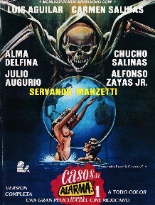

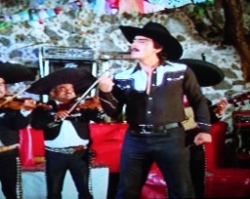
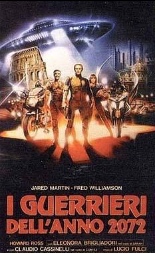
 In 2072, the TV networks’ biggest shows are reality competitions like Killbike and The Danger Game, both as nihilistic as they sound. (Isn’t that crazy? I don’t mean those shows, but the idea that TV networks will exist in 2072. Oh, that
In 2072, the TV networks’ biggest shows are reality competitions like Killbike and The Danger Game, both as nihilistic as they sound. (Isn’t that crazy? I don’t mean those shows, but the idea that TV networks will exist in 2072. Oh, that 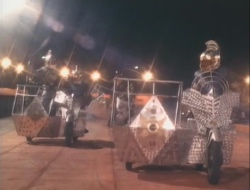
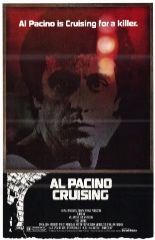
 Undoubtedly one of the most controversial films ever made, William Friedkin’s provocative tale of a homosexual killer on the loose in the sultry sexual playground of New York City in the 1980s is constantly being re-evaluated and reinterpreted through far more educated eyes than mine, but time has aged it well enough for me to at least admit that it’s an incomprehensible serial-killer flick that you just can’t look away from.
Undoubtedly one of the most controversial films ever made, William Friedkin’s provocative tale of a homosexual killer on the loose in the sultry sexual playground of New York City in the 1980s is constantly being re-evaluated and reinterpreted through far more educated eyes than mine, but time has aged it well enough for me to at least admit that it’s an incomprehensible serial-killer flick that you just can’t look away from.